Attack Geometryby David Watkins |
The Recruitment
 |
It wasn't my intent to join the Air Force. That was still in the days of the draft, before the draft lottery of the Vietnam era. I graduated from high school in 1959 and spent that summer working for my uncle on his farm in Baca County Colorado. It was the same farm where my mother had lived during the Dust Bowl. That Fall I enrolled in Pratt Junior College, some 30 miles from Nashville, Kansas where I was born. My money lasted for one semester. I moved back home, which was pleasant and took a $6 a day job working for a nearby farmer. In the spring of 1960 a just graduated neighbor invited me to go with him to Wichita to talk to an US Air Force recruiter. AF career placement was based on a battery of tests and, as I found out, the whims of the AF. There were four career field categories; mechanics, electronics, administrative and intelligence. The test provided percentile scores in each of these fields. To qualify for service in the AF one must achieve a 40 percentile in at least one of the four career fields. Career fields were structured in a 3-tiered hierarchy by test scores; 40-59, 60-79 & 80-100. I was surprised when I got my scores. I had scored over 80 percentile in each of the four career paths and was qualified to a wide range of jobs. I didn't have a clue about military intelligence, but a career in intelligence sounded like a good think. I talked to the recruiter and he said he could do that. It sounded better than waiting for the draft while working on a farm at $6 a day so I signed up. Took a train from Wichita to Kansas City for processing and then another to San Antonio, Texas for basic training. |
Basic Training
| Basic training was not what I expected. I thought it would be difficult and physically challenging. What I didn't expect was the degree of petty harassment and indoctrination. I hadn't expected my loss of freedom to have the emotional impact that it did. I hadn't anticipated that I at times would be under the mechanical control of egotistical morons. That was when I learned the fine art of becoming invisible. Don't attract attention. Look for off ramps. |
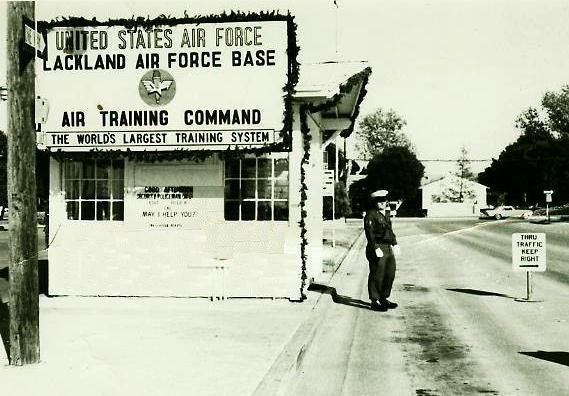 |
Electronics School
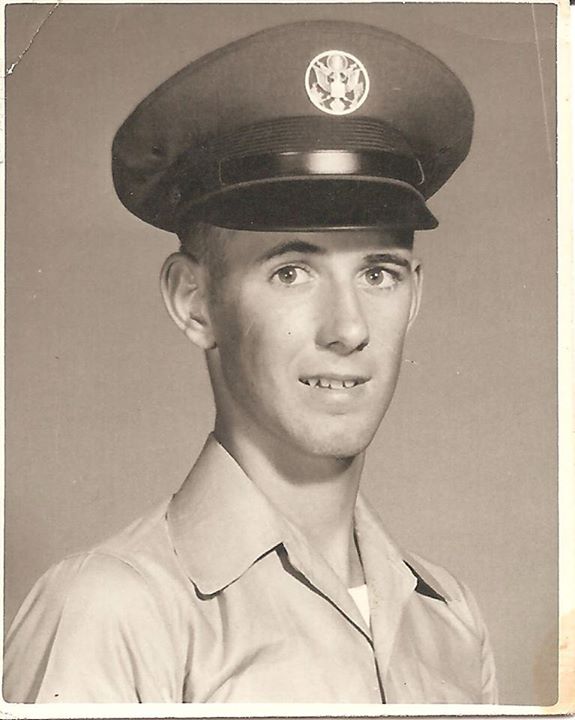 |
We are put in a temporary barracks, on hold a few days, to mesh with the schools schedules. Waiting for some class to ship, to free up a barracks. Electronics training is ramping up, new squadrons of aircraft are going on line. I will be trained to be a Weapons Control Mechanic. As I recall about 24 weeks, six hours a day, of general electronics then 24 week of training to learn to maintain the weapons control systems that are carried by F101-B and F102 interceptor aircraft. I start my training and move to my new barracks. The recently emptied barracks were filled with new trainees, but some of us were sent to fill in spaces in barracks with classes that had a few weeks to go before graduation. For two hours a day we had basic training. This was far milder than the Texas basic. On this base training was a serious mission; basic training would not infringe on that mission. Our two squad leaders were likely selected for their size it would seem, but each had reasonable requirements of effort and order. |
| There is still the 2 hours a day basic; it's not bad, well not too bad – it's overly regimented. There was an administrative aspect to it; certifications of various types, specific required indoctrination, a fair amount of physical training and some marching. All students march from the mesh hall to the classrooms in the morning and back to the mesh hall at the end of the school day. |
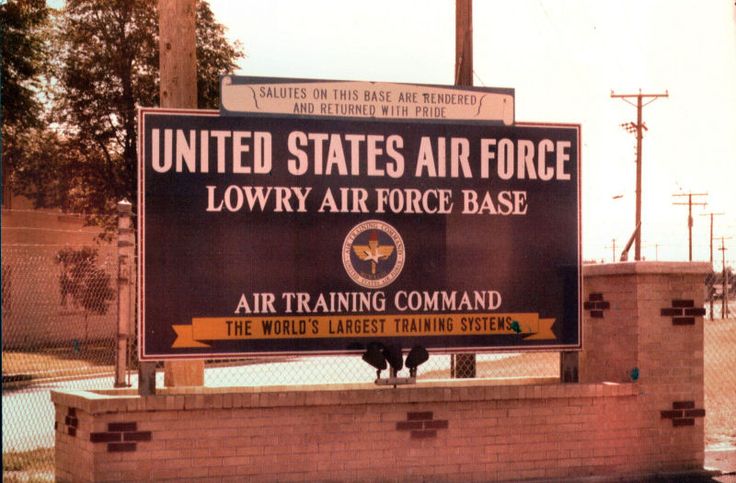 |
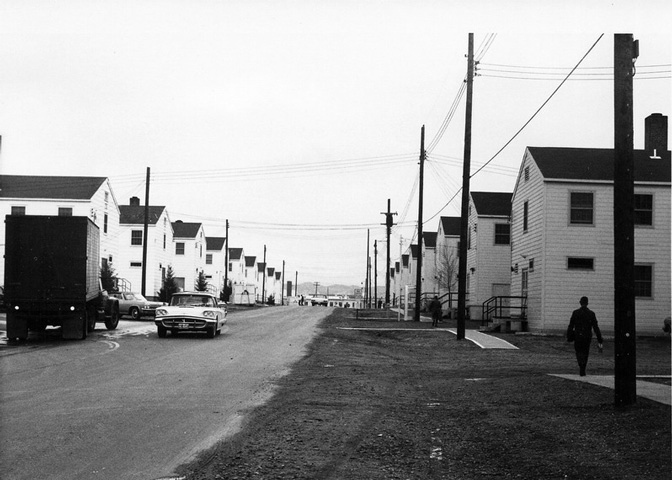 |
Over time and due to lax management of the permanent details process, the number of permanent details are increased; a latrine that might have had three details now has six. Finally they figure out that the system is out of control; too many people have disappeared from the records. EVERYBODY REPORT TO FORMATION |
MG-13 |
Introduction to Attack Geometry |
| I will be working on the F-101B 'Voodoo' fighter interceptor. The McDonnell aircraft carried infrared missiles and atomic rockets. The MG-13 was manufactured by Hughes Aircraft Company, one of the largest military contractors of the time. |
| |
| After electronics school we were, as I recollect, given a two-week leave. The pay wasn't much, but I had saved up enough for a down payment on my first car, a 1955 Ford, 4dr, six-cylinder, stick with an overdrive, sky blue with a slight turquoise tint. It was great fun with the family, but I couldn't wait to hit the road. Finally the morning arrives. I load my few possessions into my car and the long ritual of goodbye. |
 |
 |
 |
US 50 in Kansas |
The turn to Dodge City |
Along the Arkansas in the Colorado Rockies |
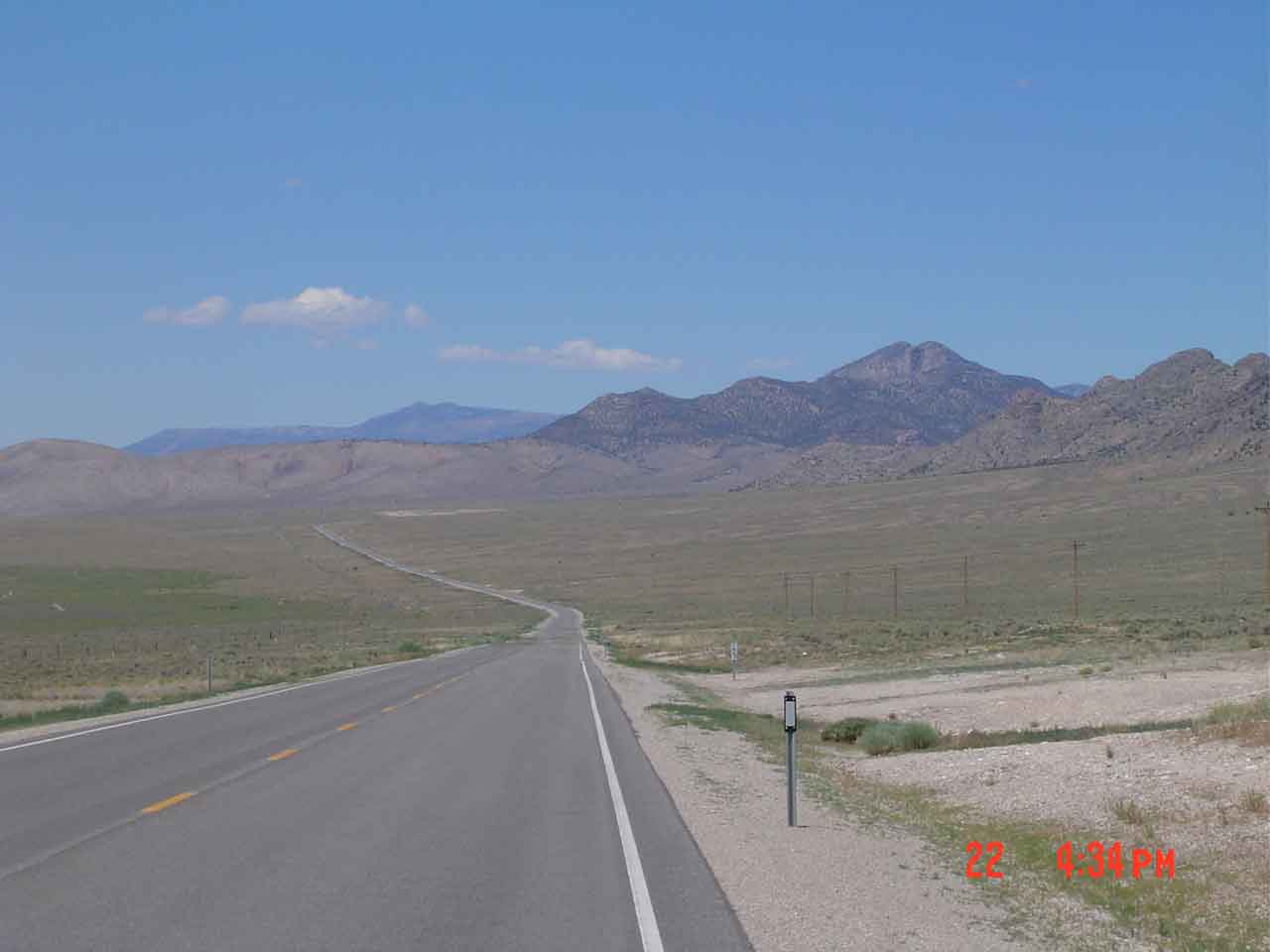 |
 |
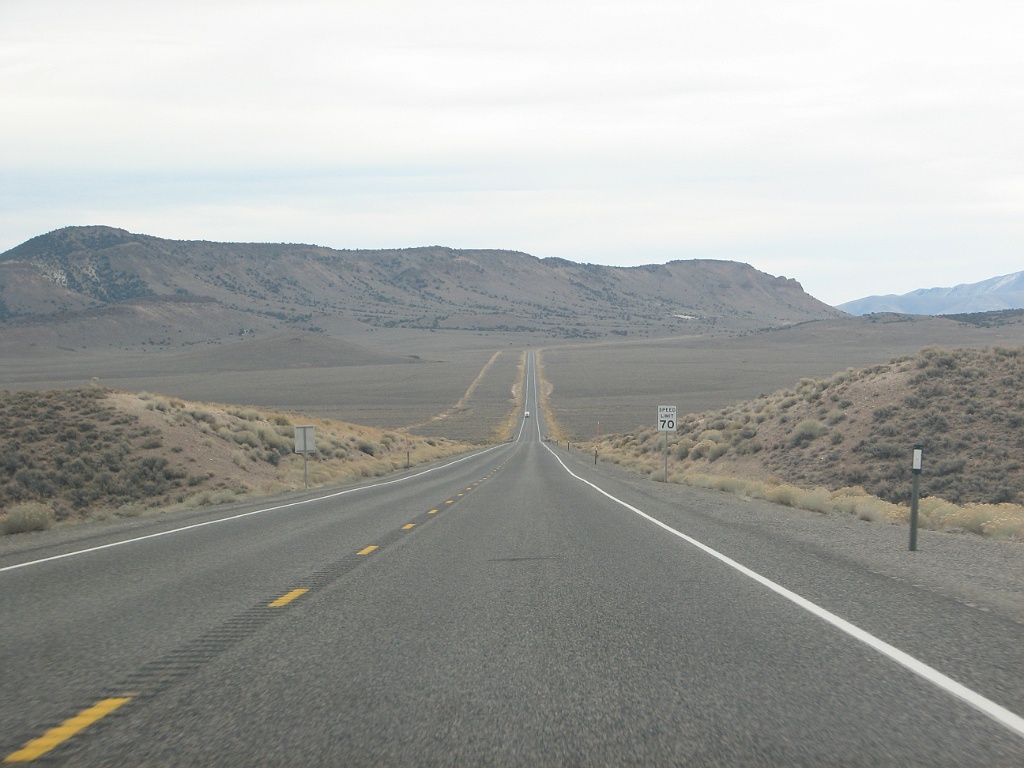 |
US 50 into Utah |
Ely, Nevada |
US 50 in Nevada |
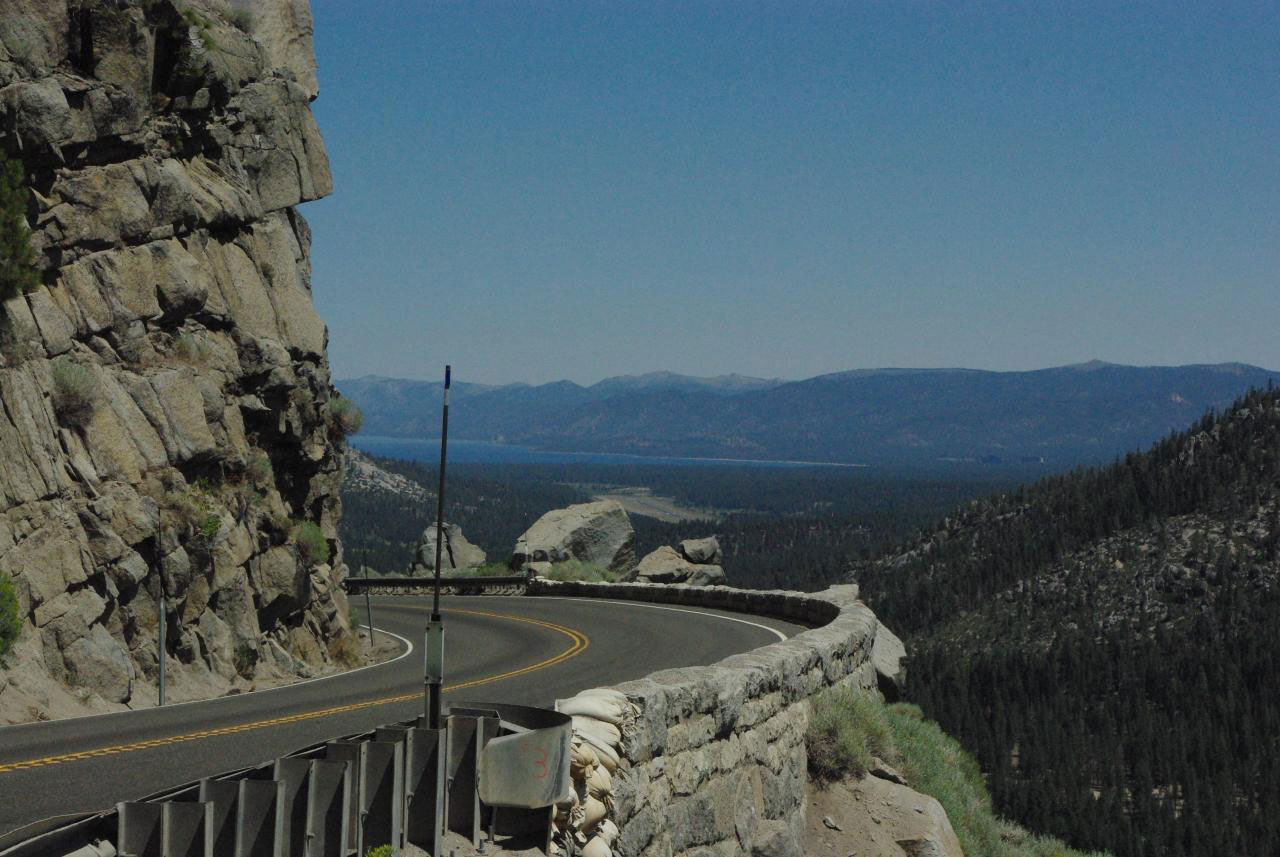 |
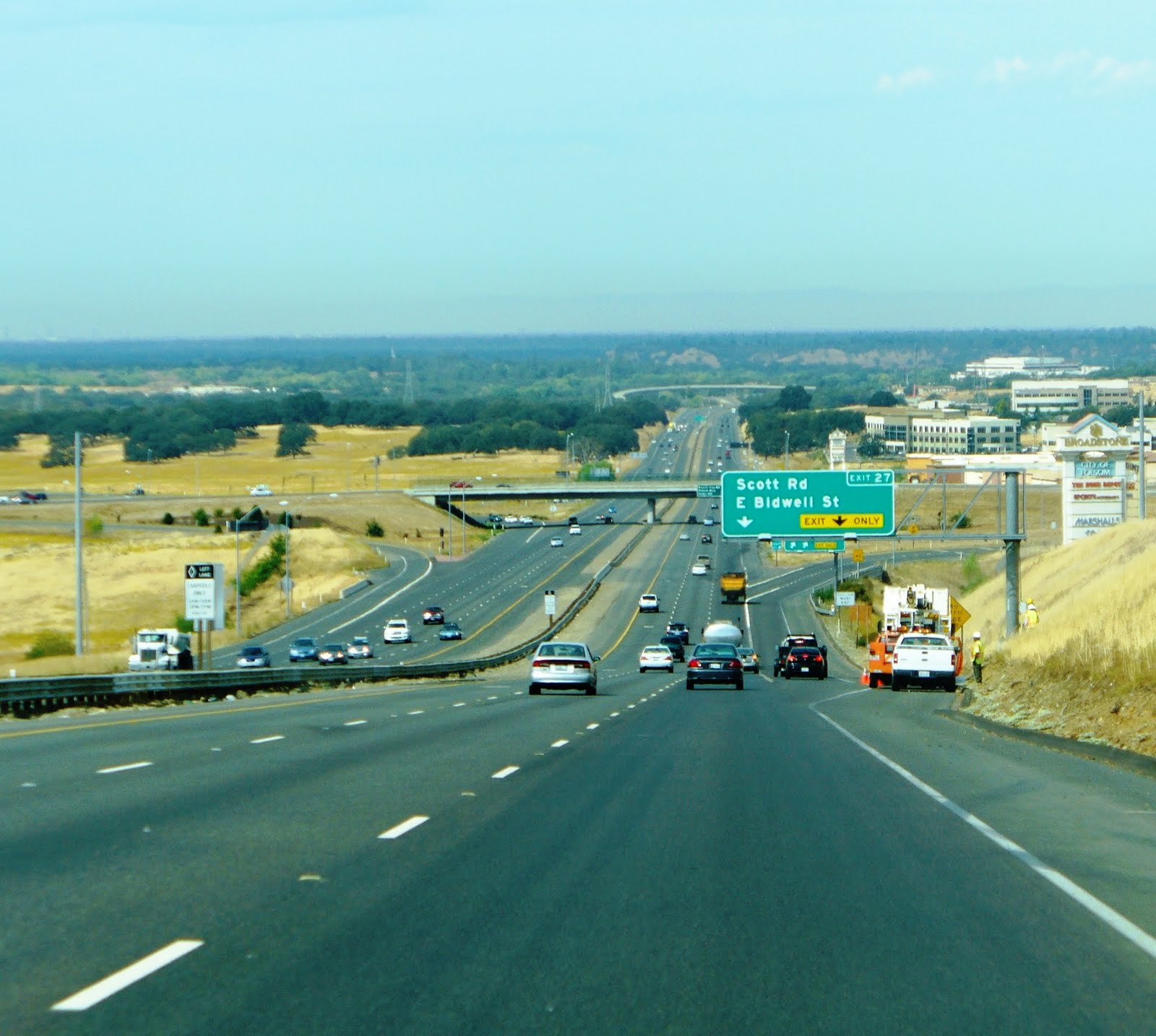 |
 |
US 50 at Lake Tahoe |
US 50 Ends in Sacramento |
US 37 to Vallejo |
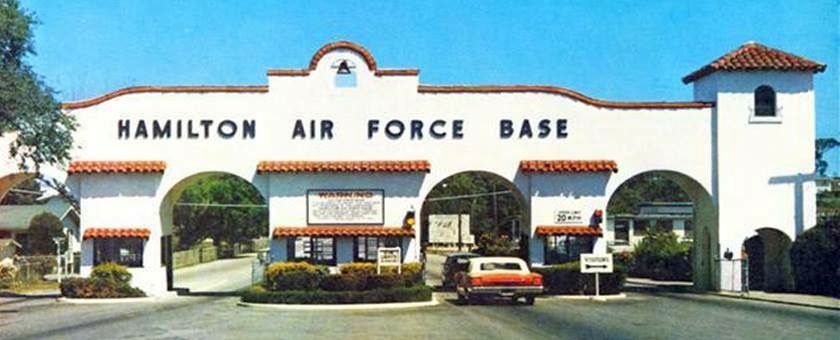 |
| The base didn't look like a base. The hills above the runways had rambling drives and the Spanish style officer housing didn't look military. The barracks for the single airmen where of a rather modern style concrete block. They were well designed for their purpose. Our barracks housed the 78th A&E (Armaments and Electronics). It was a three-story building and the rooms could hold up to four. I was put in a room with two black guys, an airman 1st class who was the Captains secretary and Charlie, an airman 3rd class in armaments. We all got along and Charlie was a good friend. Things got interesting when they put a Utah Mormon named Robert E. Lee in the room. Not a practicing Mormon, but he still considered himself to be one. |
| Most of the married airmen preferred to work day shift. As soon as my training was completed I was allowed to transfer to night shift. There were residential areas around the base. The regular routine was that most of the flights occurred during the day. Once the scheduled sorties for the day are achieved there is a scramble to put every plane back in service. day shift crews brief their night shift replacements. Some nights everything would be fixed two hours into the shift. They keep a crew in the shop, another on standby in the barracks and everyone else is free to do as they please. This led to a lot of free time. That I was prepared for. I joined the Doubleday Science Fiction Book Club and had easy access to the base library. There was a cool bookstore in San Rafael and The Tides in Sausalito a beat magnet. Also in Sausalito a retired double-decker, ferry boat, the Charles Van Damme. When we first went there the lower deck was a coffee house and the upstairs was living quarters. Later the lower deck was a restaurant and the upstairs was the coffee house. It was a 24/7 operation and 25 cents bought a bottomless cup of coffee. They had comfortable booths and it was fine with them if you drank your coffee and played cards. Sometimes there was music, more often random than any kind of performance schedule. |
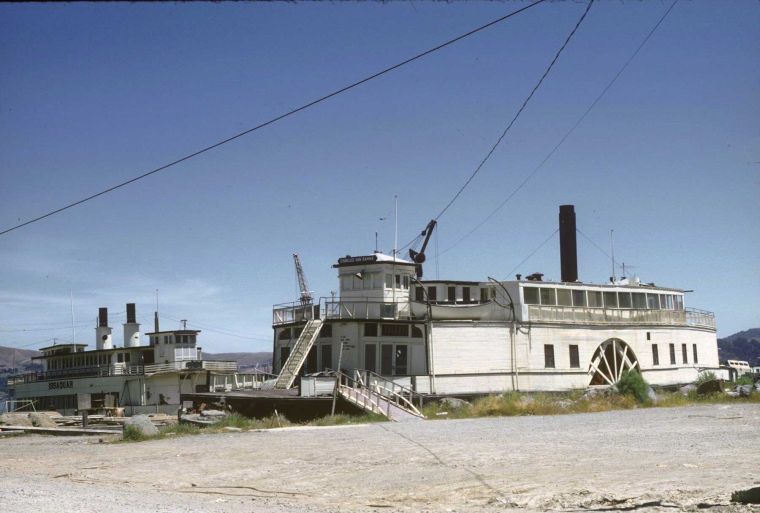 |
 |
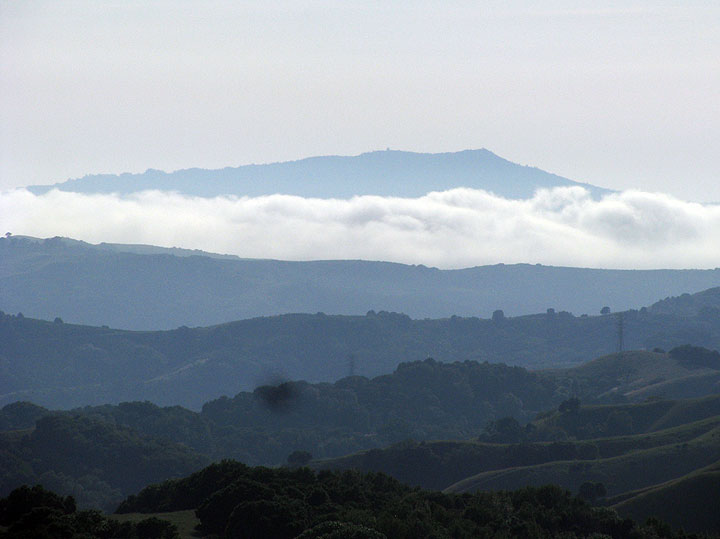 |
 |
Charles Van Damme |
Muir Woods |
Mt. Tamalpais |
Stinson Beach |
The Flight Line
| The Chief Master Sergeant who ran the radar shop was a P-51 Mustang pilot in WW2. When his wartime commission ran out he stayed on as non-commissioned officer. He is held in high regard by everyone. Not because of his fighter pilot past, but for his competence, fairness and confidence. He always knew what to do. Once he had a conflict with a newly appointed 1st Lieutenant, I can't recall what the issue was, but that was at the bottom line about who gave the orders. When they came back from their discussion of the issue with the Captain it was clear that the Chief was in charge and the Lieutenant actually appeared to be be happy with that. |
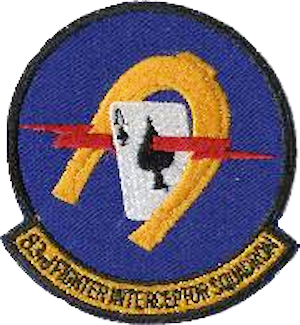 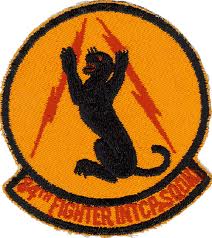 |
 |
|
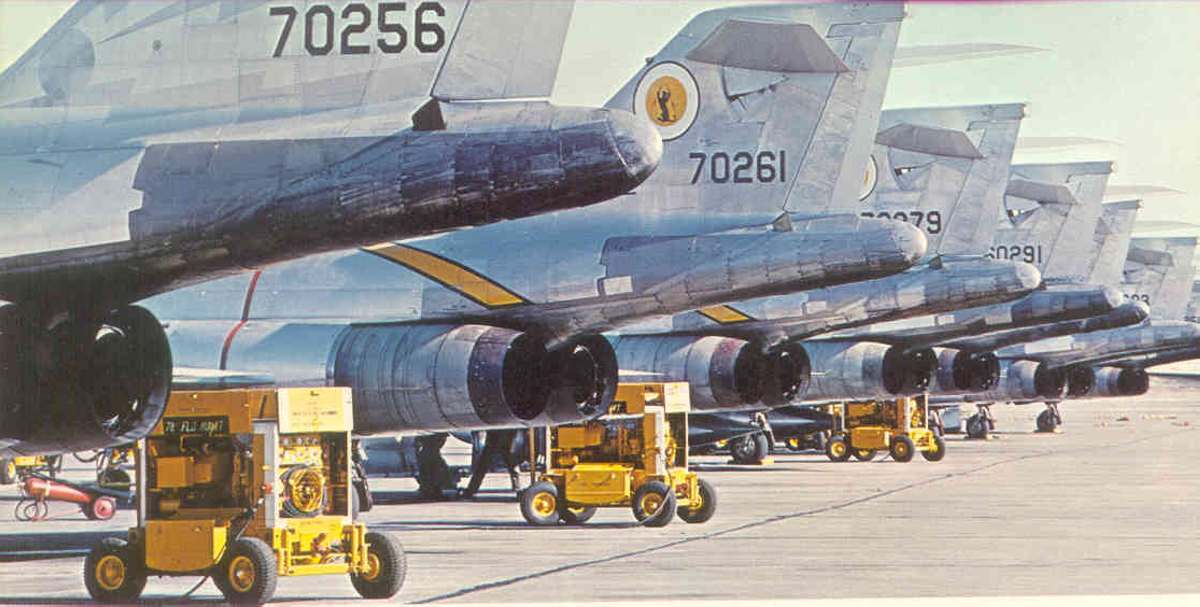 |
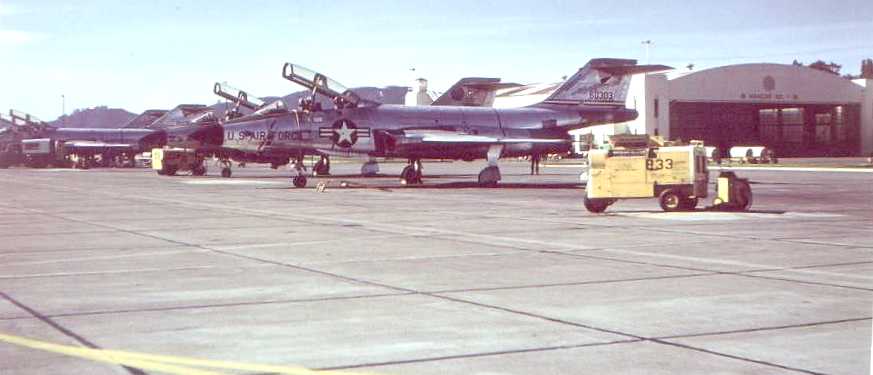 |
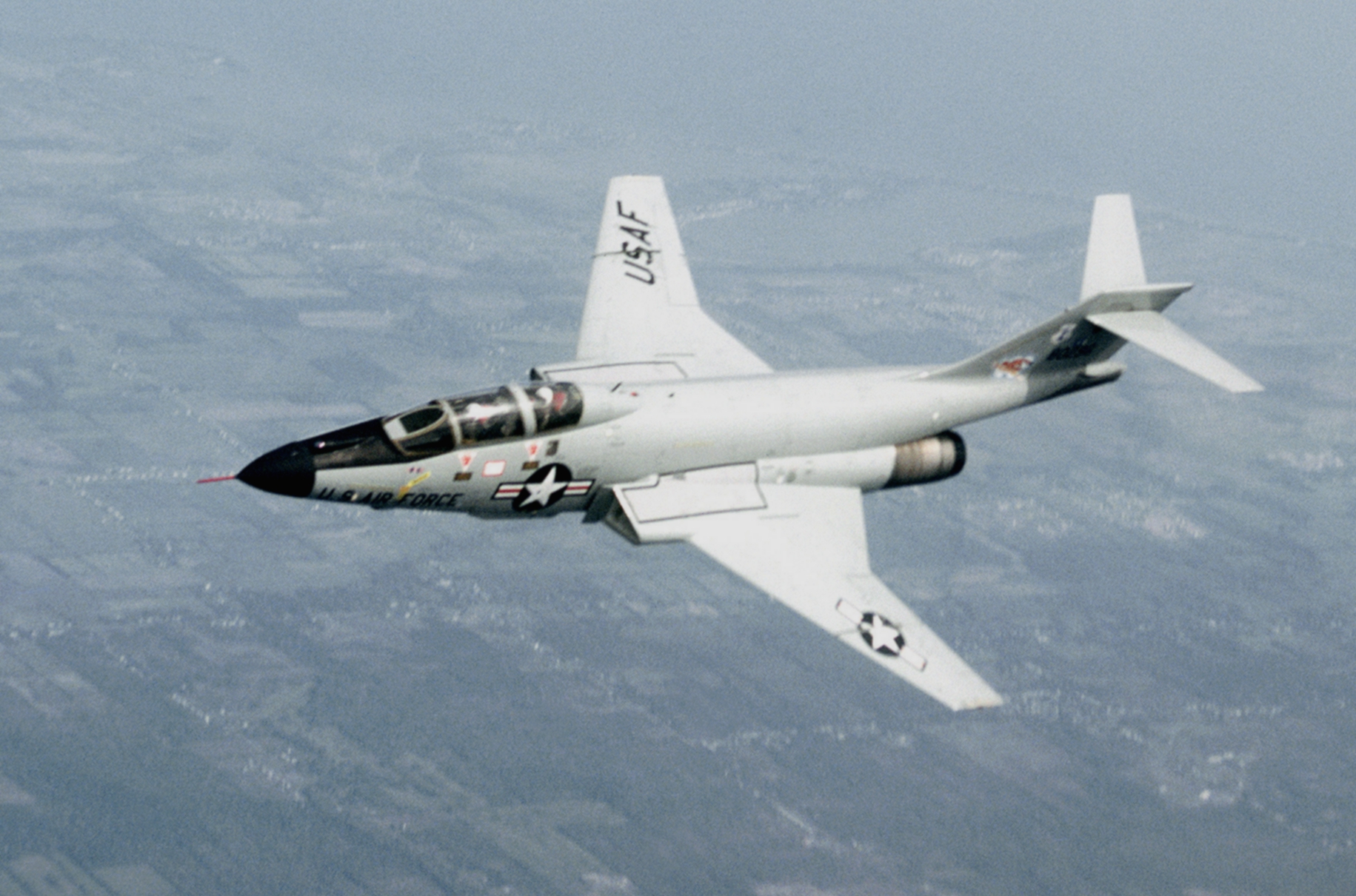 |
| The pattern of life in the Air Force was pleasant. My work was interesting and challenging, the bosses fair and encouraging. It was exciting to work on the flight line, especially during an exercise when we might turn the planes around a couple of times. Planes taxiing, fuel truck and service vehicles swarming. The afterburners roar, sometimes two side by side, and glow in the dark. With the bay at the end of the runway we were sometimes engulfed in deep fog. No flying in that, but planes still had to be fixed. At night in the fog the planes on the flight line could not be seen from the shop. The working light made an immense glow, to which the fog gave shape. The chorus of machines seemed enhanced by the fog, less shrill, but more ominous. Once out on the flight line there were smaller domes of light where crews were working. All that could be seen of the hanger was the faint glow of the radar shop windows. |
October 1962
| Life was good. Everything was smooth. I enrolled in some classes at the nearby College of Marin. Through circumstances that I can't recall I started giving the daughter of the colonel in charge of operations a ride to the college. I never met him, just encountered him now and then on the flight line or in the shop. I have two memories of our drives to school. One evening, just as the sky was starting to darken and just after I parked the car on the campus, we saw a rocket streaking across the sky and the the ignition of the second stage punctuated our experience. We didn't know what it was, it startled everyone. A rocket of course came to mind, but why? Later it was reported that it was a rocket launched from Vandenberg AFB, in southern California. Police were flooded with calls. The other that stood out in my mind, though I can’t remember her name, was her description of her life as an Air Force brat. She couldn't stand the idea of living in one place. Moving to a different state or country every four or five years was normal for her. For me it seemed frightful. The Beatles were on TV and all over the radio. At first I didn't like them. They were on the jukebox in the student lounge at at school. Most of the play was the Beatles, I succumb to their appeal. |
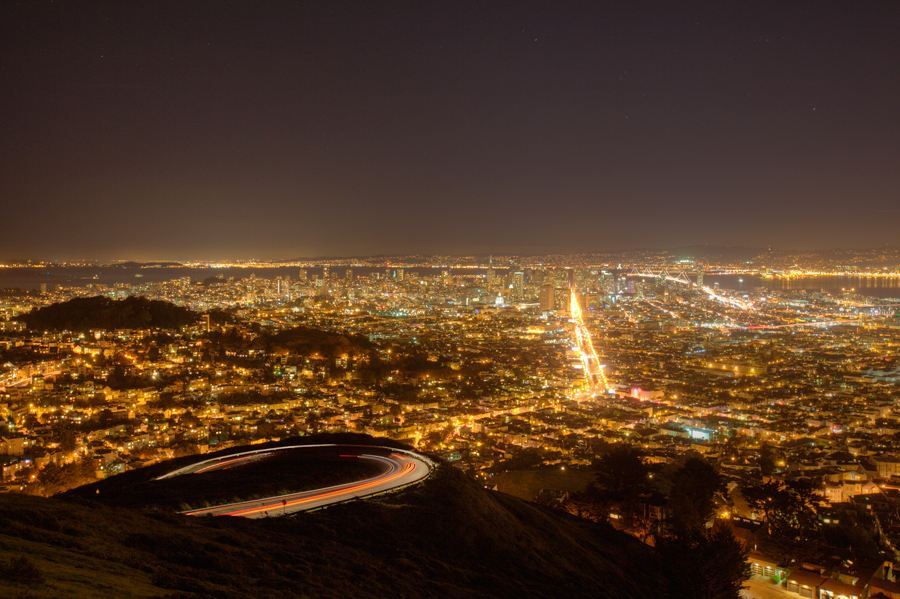 |
 |
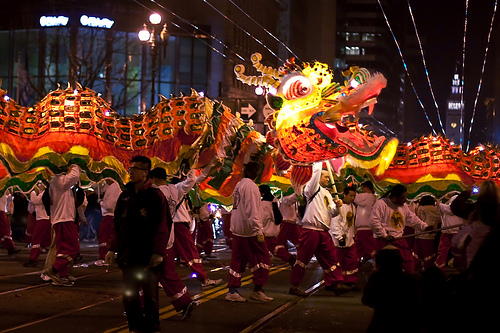 |
DEFCON 3
| What happened next is not clear in my mind. When I check my memory against existing records it is often right, but not always I thought there were at least five DEFCON (Defense Condition) alerts printed out on the radar shop teletype, but when I read up on the DEFCON system I found that there were only five levels. SAC went to DEFCON 2 but the highest we went was DEFCON 3. We could only have received two teletypes increasing our alert status. In my mind we loaded the missiles and nukes and transferred a third of each squadron's planes to Oregon (for better attack geometry) after Kennedy's speech, but I find records that indicate that occurred before his address to the nation. My memory is fairly clear, of hearing the speech on my car radio on my way from the barracks to the flight line. I sat in the parking lot to hear the last of it. I've checked the time of the President's speech and it is consistent with when I would be on my way to work. |
| The planes were all loaded, on alert for a Soviet attack. SAC at the highest level short of actual war. The F-101B has what we called a roto-door and what the manual calls a pallet. It is a door that had two infra red guided GAR-2A missiles on one side and two 1.7-kiloton MB-1/AIR-2 Genie nuclear rockets on the other. The missiles were on rails that retracted until they were nearly flush with the surface. In normal flight the missile side of the door is down and the much larger Genies are rotated into the belly of the plane. Over 20 planes in each squadron, the 83rd and the 84 Fighter Interceptor Squadrons, lined in rows and waiting.
|
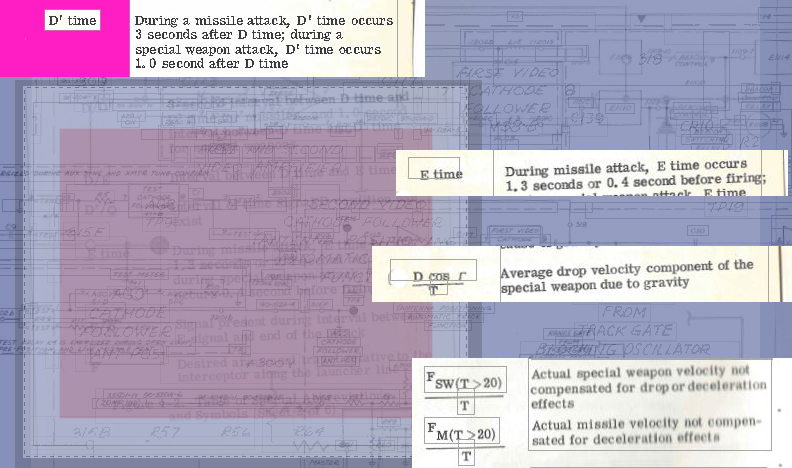
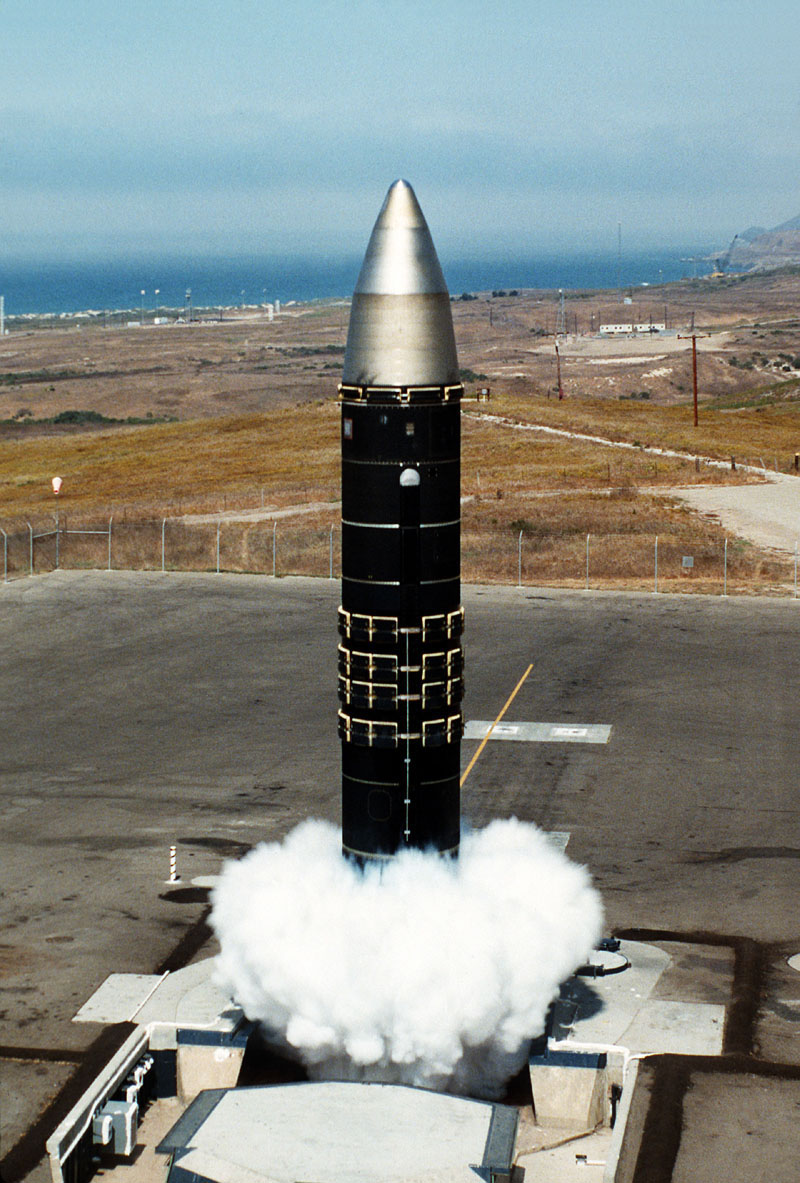 |
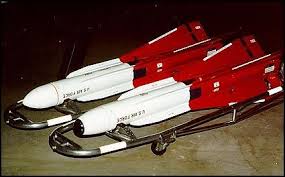 |
 |
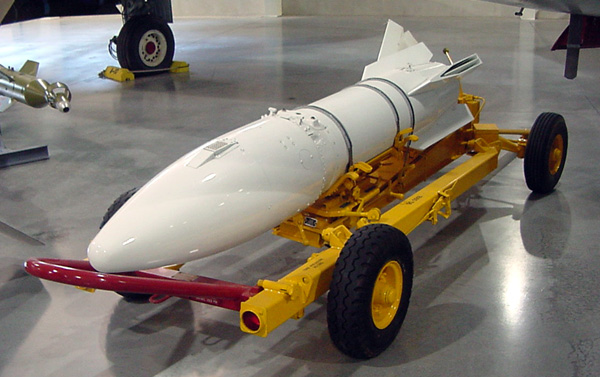 |
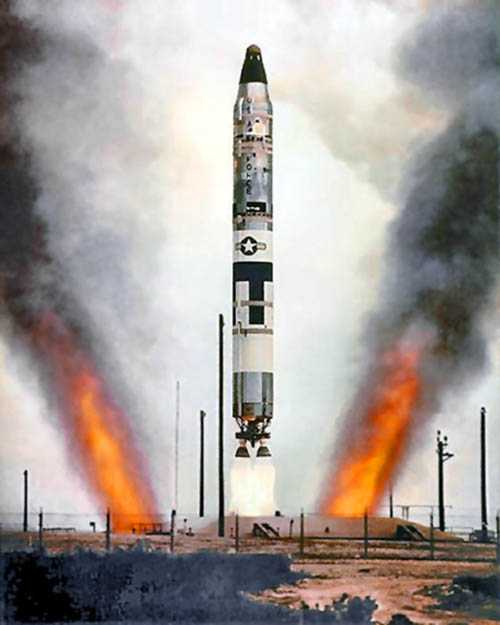 |
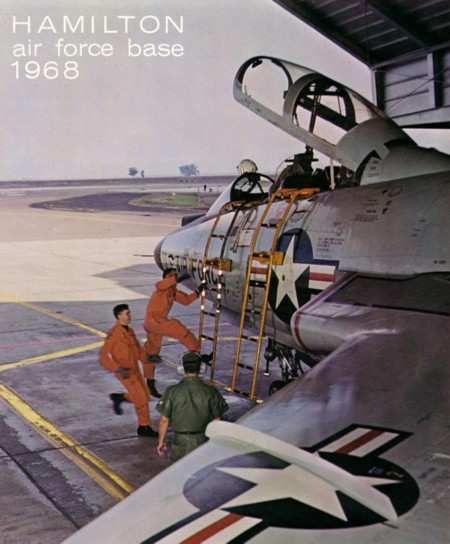 |
The experience of crisis was spiked first by the the loading of weapons, including the Genie nuclear rockets. President Kennedy's address to the nation confirmed our suspicions and magnified our sense of how serious it was. When the teletype machine in the radar shop printed out the DEFCON 3 alert, that was a huge spike. |
 |
| As a story there is a problem with the Cuban Missile Crises. A story wants incresing concern to the breaking point and then resolution. For about a week the tension escalated steadily. It was hard to imagine anything more critical, other than nuclear war itself.
|
MAD |
|